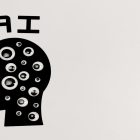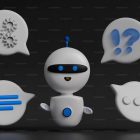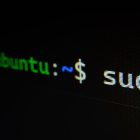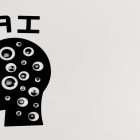From Algorithms to Artificial Intelligence: A Comprehensive Guide to Computer Science

Computer Science – Computers and technology have become an integral part of our lives, from our smartphones to our laptops and even our cars. Computer Science is a field that has transformed our world in countless ways, and its impact will only continue to grow as we move toward the future. In this comprehensive guide, we’ll explore the fundamentals of Computer Science, from algorithms to artificial intelligence.
Introduction to Computer Science
Computer Science is the study of computers and computational systems. It encompasses a range of topics, including programming, algorithms, data structures, computer networks, and artificial intelligence. The field has been instrumental in transforming our world, from the way we communicate to the way we work and learn.
The Evolution of Computers
Computers have come a long way since the first calculating devices were invented. In this section, we’ll explore the evolution of computers and how they’ve changed over time.
Early Computing Devices
The earliest computing devices were mechanical calculators, such as the abacus and the slide rule. These devices were limited in their capabilities and were primarily used for mathematical calculations.
The first electronic computer, the ENIAC, was built in 1945 and was used for military calculations. It was massive in size, taking up an entire room, and was incredibly expensive to build.
The Emergence of the Personal Computer
The personal computer revolution began in the 1970s with the introduction of the first microprocessors. These small chips allowed for the creation of smaller and more affordable computers, which eventually led to the development of the personal computer.
The 1980s saw the rise of companies like Apple and Microsoft, which created operating systems and software that made personal computers more accessible to the general public.
The Internet and World Wide Web
The invention of the Internet and the World Wide Web revolutionized the way we communicate and access information. The internet is a global network of interconnected computers, while the World Wide Web is a system of interconnected documents and resources.
The development of web browsers, such as Netscape Navigator and Internet Explorer, made it easy for people to access and navigate the web.
Programming and Software Development
Programming and software development is at the core of Computer Science. In this section, we’ll explore the basics of programming and the different programming languages that are commonly used.
Introduction to Programming
Programming is the process of creating instructions for a computer to follow. These instructions are written in a programming language, which is a set of rules and syntax that the computer can understand.
Programming is essential for creating software and applications, as well as for controlling hardware devices.
Object-Oriented Programming
Object-Oriented Programming (OOP) is a programming paradigm that focuses on objects, rather than functions or procedures. An object is a data structure that contains data and the methods that operate on that data.
OOP is widely used in modern programming languages, such as Java and Python.
Popular Programming Languages
There are many different programming languages, each with its own syntax and set of features. Some of the most popular programming languages include:
- Java
- Python
- C++
- JavaScript
- Ruby
Each language has its own strengths and weaknesses, and the choice of language often depends on the specific task at hand.
Data Structures and Algorithms
Data structures and algorithms are fundamental concepts in Computer Science. In this section, we’ll explore some of the basic data structures and common algorithms that are used in programming.
Basic Data Structures
Data structures are ways of organizing and storing data in a computer program. Some of the basic data structures include:
- Arrays
- Linked lists
- Stacks and queues
- Trees and graphs
Each data structure has its own advantages and disadvantages, and the choice of data structure often depends on the specific task at hand.
Common Algorithms
An algorithm is a set of instructions for solving a particular problem. There are many different algorithms, each with its own set of advantages and disadvantages. Some of the most common algorithms include:
- Sorting algorithms
- Searching algorithms
- Graph algorithms
Algorithms are essential for solving complex problems and for creating efficient software and applications.
Computer Networks
Computer networks are the systems that allow computers to communicate with each other. In this section, we’ll explore the basics of computer networks and the different types of networks that exist.
Network Basics
A computer network is a system of interconnected computers and devices. Networks can be connected using wired or wireless connections, and they can range in size from small local area networks (LANs) to large wide area networks (WANs).
Types of Networks
There are many different types of computer networks, each with its own advantages and disadvantages. Some of the most common types of networks include:
- LANs
- WANs
- Metropolitan Area Networks (MANs)
- Wireless Networks
The choice of the network often depends on the specific needs of the organization or individual.
Artificial Intelligence
Artificial Intelligence (AI) is a rapidly growing field that has the potential to revolutionize our world in countless ways. In this section, we’ll explore the history of AI, the different types of AI, and some of the key technologies used in AI.
History of AI
AI has its roots in the early days of computing when scientists and researchers began exploring the possibility of creating machines that could think and learn like humans. The field of AI has gone through many ups and downs over the years, but it has recently experienced a resurgence due to advances in machine learning and other key technologies.
Types of AI
There are many different types of AI, each with its own set of strengths and weaknesses. Some of the most common types of AI include:
- Expert systems
- Neural networks
- Fuzzy logic systems
- Genetic algorithms
Each type of AI has its own applications and is used in different ways.
Machine Learning
Machine Learning is a key technology in AI that allows computers to learn and improve their performance without being explicitly programmed. Machine Learning algorithms are used in a wide range of applications, including image recognition, natural language processing, and predictive analytics.
Natural Language Processing
Natural Language Processing (NLP) is a subfield of AI that focuses on the interaction between computers and human language. NLP is used in applications such as chatbots, speech recognition, and sentiment analysis.
Ethics in Computer Science
As the field of Computer Science continues to grow and evolve, it’s important to consider the ethical implications of the technologies that are being developed. In this section, we’ll explore some of the key ethical issues in Computer Science.
Data Privacy and Security
Data privacy and security are important considerations in any technology development. With the increasing amount of data being collected and stored by companies and organizations, it’s essential to ensure that data is protected from unauthorized access and that individuals’ privacy rights are respected.
Bias in AI
As AI becomes more prevalent in our society, it’s important to consider the potential for bias in AI systems. If AI systems are trained on biased data, they may perpetuate and even amplify existing biases in society. It’s important to ensure that AI systems are trained on diverse and representative datasets to avoid bias.
Autonomous Systems
Autonomous systems, such as self-driving cars and drones, raise ethical concerns about safety and accountability. As these systems become more prevalent, it’s essential to ensure that they are designed and tested with safety in mind and that there are mechanisms in place to assign responsibility in the event of accidents or malfunctions.
Accessibility
As technology becomes more integral to our daily lives, it’s important to consider the needs of individuals with disabilities. It’s essential to ensure that technology is designed and developed with accessibility in mind so that everyone can benefit from its advances.
Conclusion
Computer Science is a rapidly evolving field that has the potential to transform our world in countless ways. By understanding the fundamental concepts and technologies of Computer Science, we can better appreciate the advances that are being made and the ethical considerations that come with them. As we continue to develop new technologies, it’s important to ensure that we do so in a responsible and ethical manner, so that we can create a better future for all.
FAQs
- What is Computer Science? Computer Science is the study of computers and computing technologies, including software, hardware, and networks.
- What are some of the most popular programming languages? Some of the most popular programming languages include Java, Python, C++, JavaScript, and Ruby.
- What are data structures and algorithms? Data structures are ways of organizing and storing data in a computer program, while algorithms are sets of instructions for solving a particular problem.
- What is Artificial Intelligence? Artificial Intelligence is a field of computer science that focuses on creating intelligent machines that can think and learn like humans.
-
What are some of the ethical considerations in Computer Science? Ethical considerations in Computer Science include data privacy and security, bias in AI, autonomous systems, and accessibility.




































